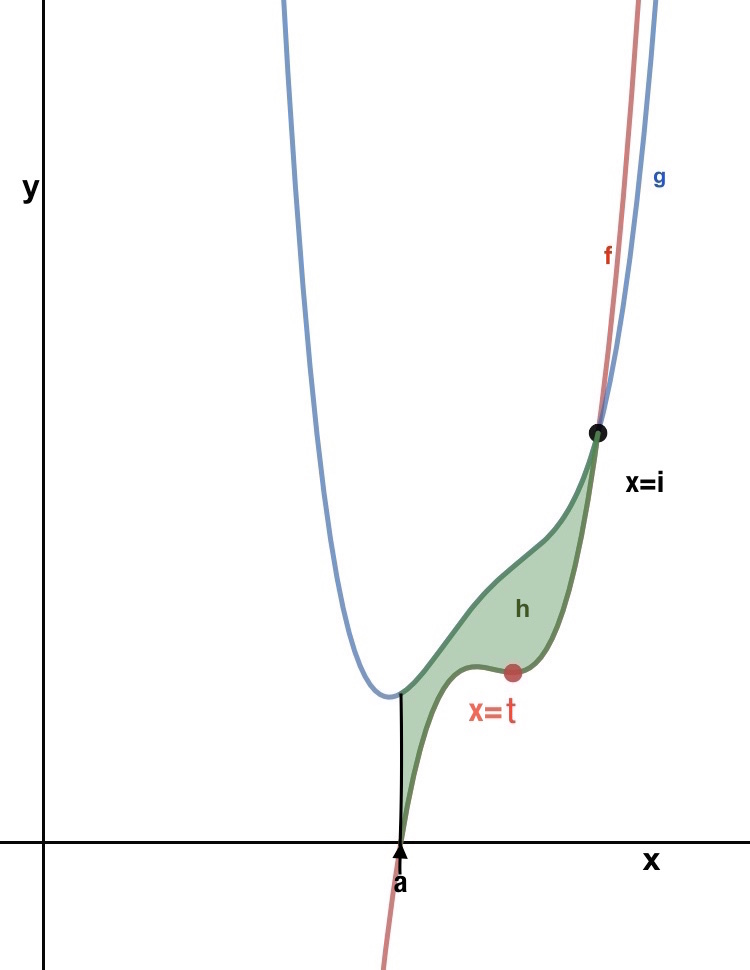The Slope and Concavity of the Area Between Two Functions

is shown in blue. is shown in red. is represented by the green area between and .
Let be continous and differentiable functions. Let be defined as a function of such that
.
is a point of intersection for and . is a critical point of .
Which of the following choices properly arranges the values of and from least to greatest?
(Ignore the answer choice " ")
This section requires Javascript.
You are seeing this because something didn't load right. We suggest you, (a) try
refreshing the page, (b) enabling javascript if it is disabled on your browser and,
finally, (c)
loading the
non-javascript version of this page
. We're sorry about the hassle.
h ′ ( a ) = − ( g ( a ) − f ( a ) )
= f ( a ) − g ( a )
h ′ ′ ( a ) = f ′ ( a ) − g ′ ( a )
h ′ ′ ( t ) = f ′ ( t ) − g ′ ( t )
= 0 − g ′ ( t )
Because g ′ ( t ) is positive ( g is increasing at x = t ), h ′ ′ ( t ) is negative.
h ′ ( i ) = f ( i ) − g ( i )
= 0
h ′ ′ ( i ) = f ′ ( i ) − g ′ ( i )
Both f ′ ( i ) and g ′ ( i ) are positive, but in the graph, we can see that f is steeper than g at x = i and thus has a larger derivative at x = i . This means that h ′ ′ ( i ) is positive.
In the proper order, h ′ ′ ( t ) , h ′ ( i ) , h ′ ′ ( i ) .